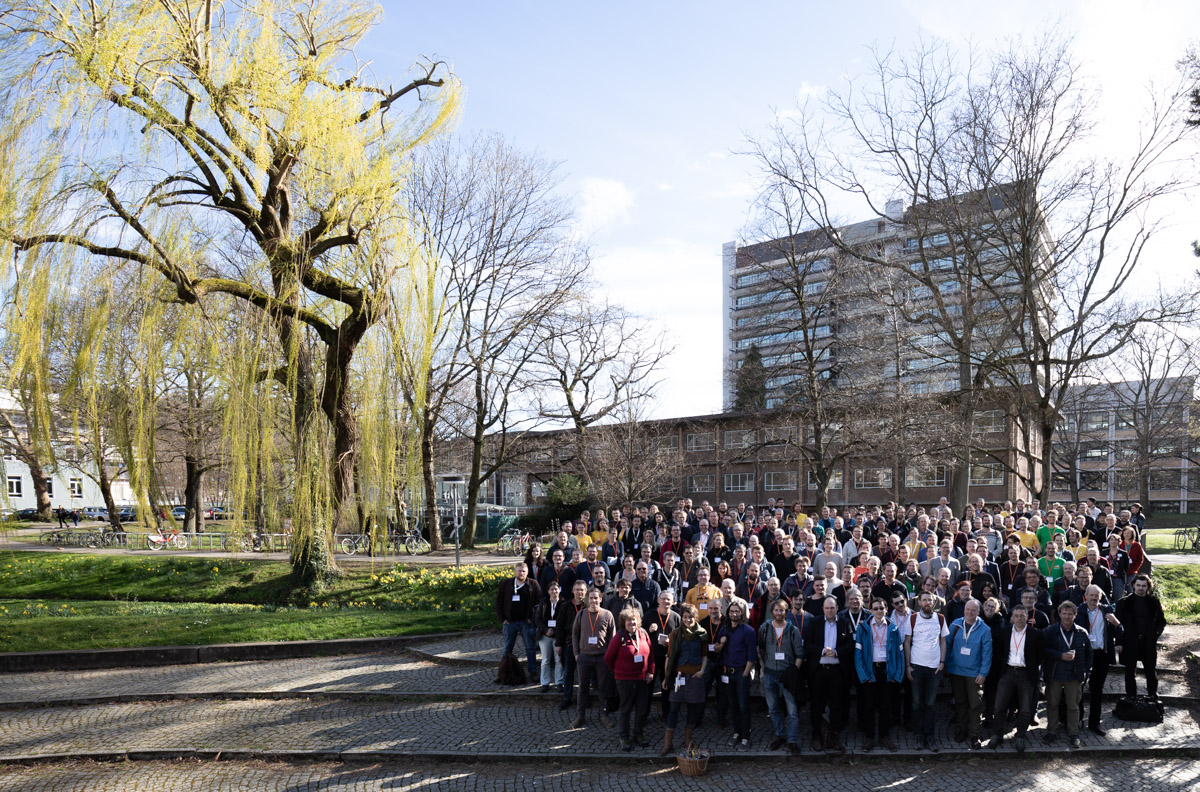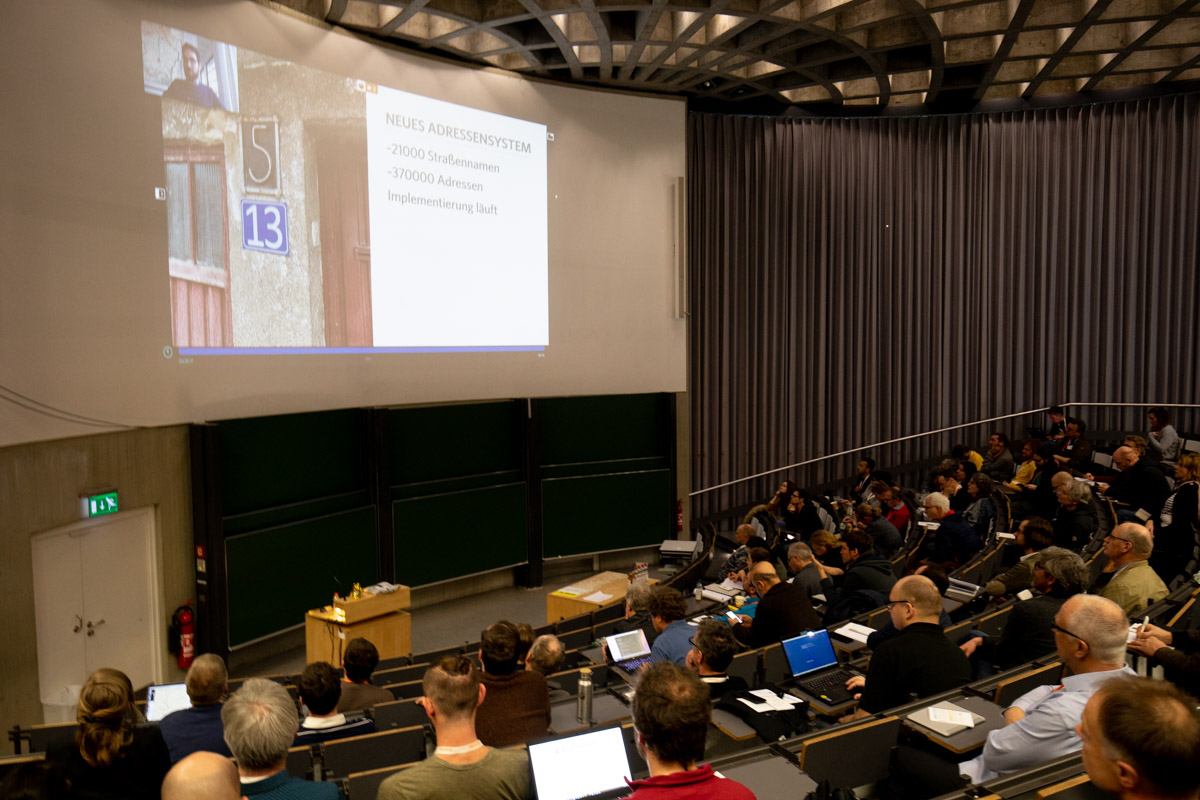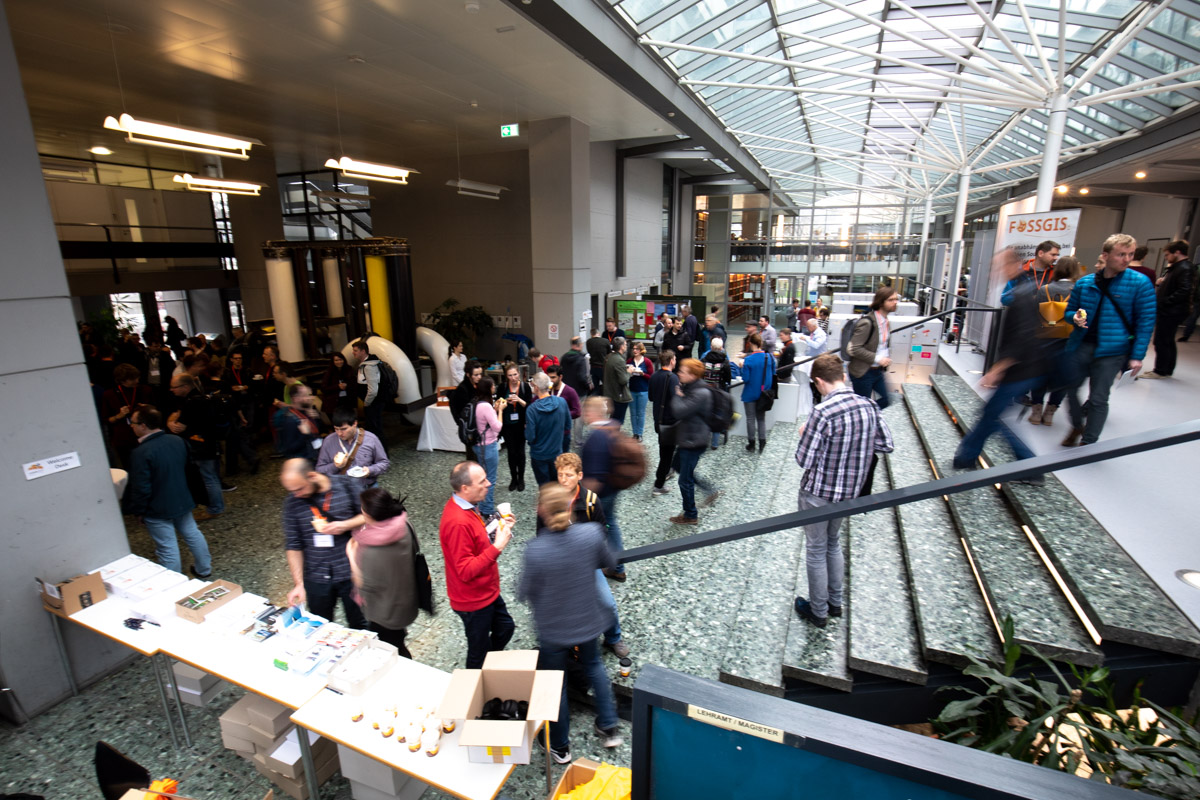Towards Remotified Conferences

Our annual FOSSGIS conference just ended prematurely on Friday. Due to Corona we had to improvise and tweak a few things. Notably a lot of people couldn’t make it, either because they wanted to stay on the safe side for personal reasons or because their employers cancelled all business trips. This resulted in a lot of cancellations just before the conference, including a few speakers.
For those who still wanted to join, we wanted to have as much content as possible. We already live stream almost all the talks, except for a few who don’t wish to be televised, so remote consumption of the conference programme is nothing new to us. But because of speakers not being able to travel, we had to adapt and enabled remote speaking for the first time.
We are of the opinion that conferences are not just about talks, but about the connections we make, but considering the situation we can make more connections by allowing remote speaking than by cancelling the talks altogether. Unfortunately, we didn’t have much time before the conference to test thoroughly: The final decision to hold the conference just happened less than 48 hours before the opening.
Tech
Our conferences are usually held at universities, this year at University of Freiburg, which gave us the possibility to use the video conference calling system of the German National Research and Education Network, DFN, which is a web based application that luckily doesn’t need any addtional plugins.
In some cases we only had a few hours between knowing the speaker wouldn’t come to the conference and their scheduled talk. This meant we could only inform them about the technical necessities and ask them to join one of the test runs. Unfortunately not all of the participants were able to join our test, so in some cases we had a rocky start into the talk: In those cases the viewers had to wait for several minutes until the setup was settled. This is not perfect, but the pariticipants’ expectations were reduced due to the circumstances.
Also, because there was not enough time, we couldn’t require a specific hardware setup. Thus some speakers had used either their notebook’s internal microphone, which even if not drowned by fan noise in most cases is too quiet, or they used Bluetooth headsets which had troubles with transmission, resulting in very distorted and unpleasant audio.

The video part worked much better: Most webcams are good enough for the picture-in-picture mode we used: Big slides on full screen and small camera window in the corner. Small video interruptions or low resolution are also not as annoying as audio hiccups.
Q&A
As I mentioned before, I believe that the exchange with participants and speakers is very important. Of course you can’t just talk in the hallway with the speaker after the talk, but at least for publicly suitable questions we gave everyone to get the microphone and ask the speaker directly in the Q&A session. Thanks to the N-1 audio setup the VOC has provided for us, the whole speaker-participant conversation worked quite well without any echo.
Speaker Experience
While the participants were mostly positive about the possibilities to watch the talks and being able to ask questions, some speakers noted that the presenting experience has not been optimal: They did not have a video feed from the hall, but rather just a view into the control room. I suggested to turn the camera into the crowd, but the VOC crew noted that for privacy reasons they don’t want to do that, even though that we asked for the participants’ permission.
We muted the moderator’s microphone during the talk, so we the audience wouldn’t get any amplified noises, but this also meant that the speakers didn’t get any audible feedback from hall during the talk.
Developing the Concept
We didn’t really plan for all of this, but reacted to the situation, so not everything has been perfect. If we want or need remote speakers in the future, we need to make sure that a few things are in place:
Must Haves
Headset: Speakers need a wired headset or dedicated microphone, no excuses. Yes, it is easier to just talk into the notebook, but this does not work with a hall full of people. If your speaker doesn’t have suitable equipment, you’ll need to provide some. I’ve been told that people had good experiences with the Sennheiser PC 8 (Amazon), which is around 30 Euro/35 USD and features driver-less USB audio.
Internet Connectivity: Remote speaking is not for everyone from everywhere, you absolutely need a stable connection above all. Speaking from a home DSL or cable connection is good, but only if you don’t have packet loss and at least a few megabits of bandwidth. If speakers don’t have this at home or in the office, they definitely need to look for a better location. The location also needs to be tested beforehand, so there are no unpleasant surprises such as restrictive firewalls. Also: No wi-fi. Especially in metropolitan areas where multiple dozen wireless networks are competing, there will be unpleasant jitter. Speakers need to connect cables or, if sufficiently stable, use LTE, which has latency guarantees (no LTE over wi-fi though).
Light: Often more important than the camera itself is the lighting. Optimally natural light coming from the same direction as the camera or from the side. If that is not available, a properly illuminated ceiling works as well.
Test Run: Every talk needs to be tested. Optimally a connection from the venue should be established and tested for multiple minutes. Based on the experience, I strongly suggest to test a few days in advance, so speakers can acquire help or better equipment, if necessary.
Nice to Have
Chat Rooms: With FOSSGIS conference we are already streaming and recording all talks (most are published on the same day), so people who can’t come to watch, can do it from home. But it would be nice to facilitate the contact between speakers and viewers: It much easier to talk to someone spontaneously in the hallway than writing an email.
Conferencing Software: The DFN system worked quite alright, but it is a closed systems in which only research institutes can initiate rooms. In my experience Apple’s FaceTime is the most reliable video calling service, but it is only available on Apple devices thus not a good option for conferences. I would much more prefer some open source solution, that works for all operating systems and enables speakers and participants to create own rooms. I have been using Jitsi for some 1-to-1 video calls with good results. Probably it could also be used for conference setups.
Live (Audio/Video) Feedback: YouTube and Twitch have live chat for streamers. Especially speakers who don’t just read slides, but have a more conversational style of speaking need to get some live feedback, so audience video and audio could help as long as it doesn’t get too noisy.
Summary
We are not yet able to replace in-person conferences fully, especially considering that you can’t drink a beverage with the conference participants after a long day of talks, but considering the more available and affordable technology, we can at least save some of the tedious travel.

A big strength of conferences is that people are using a certain time frame to educate and to form new networks, so I doubt that fully remote conferences are going to take over soon, but extraordinary circumstances require extraordinary actions.
